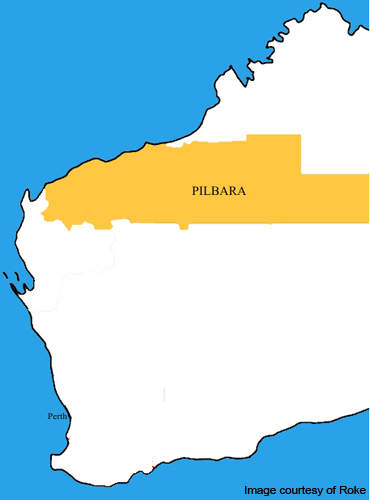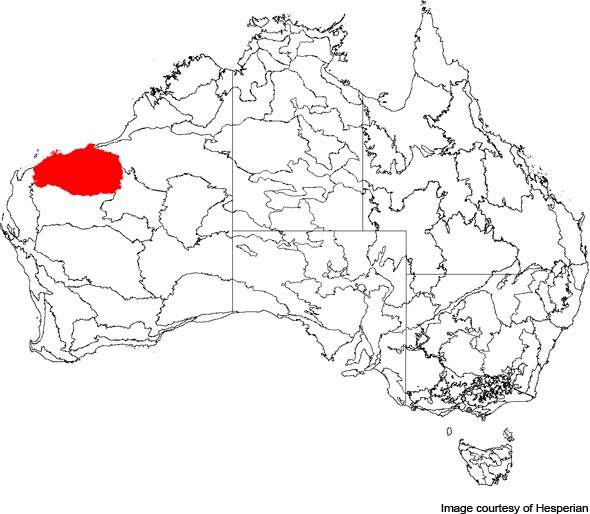The Nullagine iron ore deposit is an extensive mining licence portfolio located 140km north of Newman in the Pilbara region of Western Australia. The project is developed over an area of 1,500km². Jointly owned by BC Iron and Fortescue Metals Group (FMG), the project began construction in the third quarter of 2010 and the first 20,000t of ore were shipped to China in February 2011.
The mine has been developed at an estimated cost of A$51.5m. Following encouraging results from the mining trial, FMG confirmed its commitment to proceed with the mine development. The development activities included securing the final regulatory approval, contract awarding and construction of the haul road, village and mine centre.
Nullagine iron ore reserves
The mine’s reserve base totals 89.1Mt of ore graded at 54.1% iron (Fe). This includes approximately 36Mt of direct shipping ore reserve graded at 56.9% Fe.
The measured, indicated and inferred reserves stand at approximately 2.2Mt, 68.8Mt and 18.1Mt respectively. The ores are of a high quality with few impurities and ultra-low phosphorus.
Nullagine mine geology
The deposit lies within the northern eastern section of the Hamersley basin beneath mafic volcanic and volcaniclastic rocks. Rocks dip shallowly towards the south and lay on top of Archaean granite and greenstone rocks.
Due to deformation-led folding, prolonged erosion and uplift that has taken place during the Proterozoic age, the current landscape of mesas, flat-surfaced plateaus and monadnocks is fractured and dissected.
The deposit hosts approximately 90km of iron-rich palaeochannels. Three prospect areas, including palaeo-Bonnie Creek (pBC), palaeo-Nullagine River (pNR) and the palaeo-Shaw River (pSR), dominate the project site. Each prospect area contains palaeochannels with iron-rich infill material.
The pBC hosts iron-rich channel deposits over an area of approximately 15.5km². Semi-continuous channel deposits ranging in width from 150m to 700m are found over a length of 40km. The upper extensions of the palaeochannel that form part of the current topography are comparatively intact. In contrast, the lower eastern extensions are cut into flat-topped mesas by the current drainage.
The channel’s upper part is made up of pisolitic iron units ranging in thicknesses up to 20m. The iron-rich unit is hosted on top of 35m-thick detrital units, including clay and carbonates.
The pNR area extends 2.16km². It comprises pisolitic channel outcrops over a length of 20m. Due to the current drainage and outcrops, the area is largely eroded into small unconnected mesas.
The pSR zone hosts iron-rich outcrops along a channel length of approximately 30km. Headwaters of the palaeochannel are relatively intact and are included in the current landscape. Middle and lower extensions of the palaeochannel are dissected by the Shaw river channel deposit.
Nullagine mining and processing
Ore from the Nullagine deposit is mined, crushed, screened and transported to the customer’s site. Trial mining at Nullagine’s outcamp deposit began in September 2009 and was carried out until November. During this period, nearly 65,000t of ore was extracted using surface miners. Due to the outcropping nature of the area, waste-to-ore strip ratio was relatively low at 1:1. Ore was transported from the east end of the outcamp deposit and nearly 43,000t was crushed.
Results supported the findings of the feasibility study. The mined, crushed and screened ore demonstrated higher tonnage and iron grade than estimated by the ore reserve model. A positive reconciliation of approximately 13% was achieved in terms of contained metal.
Success of the trial mining confirmed surface mining as the mining method. Under this method, ROM feed is delivered to the crushing circuit at a size that improves performance of crushing and screening.
Nullagine mine production
The project has a start-up capacity of nearly three million tons per annum. The production rate will be gradually ramped up to meet the project’s design capacity of five million tons a year.
Ore transportation
Ore will be transported via a 56km private haul road, which is currently under construction and is expected to be completed by the first quarter of 2011. To support the production ramp-up, FMG is also developing a rail line near Christmas Creek, which can be accessed via the private haul road.
The project is the first in the Pilbara region to use a third party’s rail infrastructure.






